There’s a common misconception when dressing for the great outdoors that you should stick to your old clothing.
Whenever I’m out hiking, I always notice the common uniform: old tracksuit bottoms, a worn-out coat, walking boots, and a wool hat. I understand the practicality and ease of this, but I wish we cared more about what we wear whilst navigating our way through nature.
Your first thought may be that you wouldn’t want to damage or ruin expensive clothing, which is perfectly understandable, but there’s a whole world of brands that blend style with function.
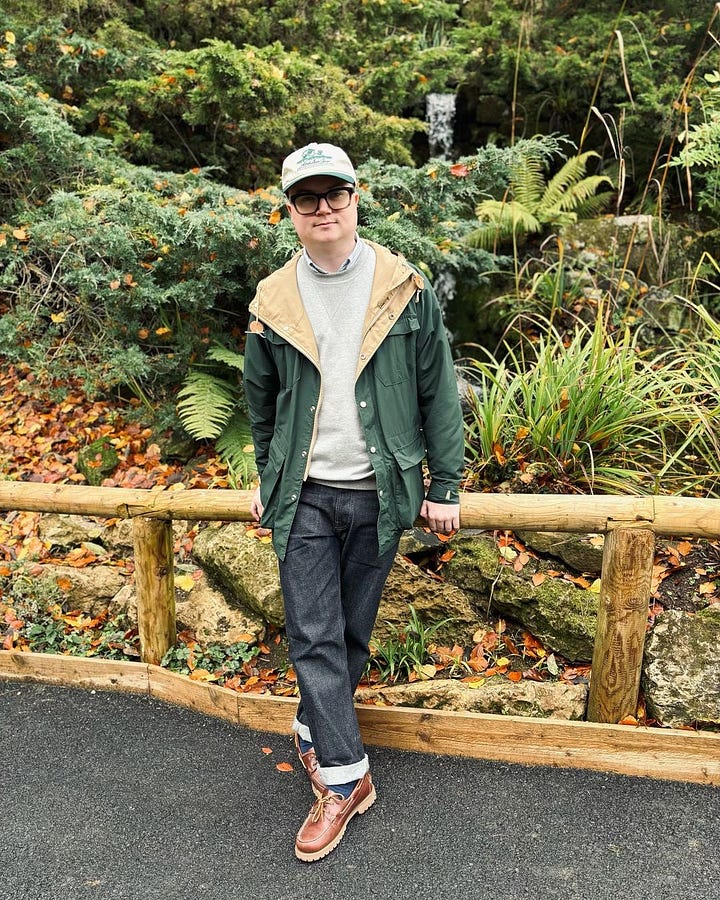



What is Rugged Ivy?
Rugged Ivy, often referred to as Hard Ivy, is a distinct interpretation of classic Ivy League style that emphasises durability, practicality, and a more rugged aesthetic. This look balances timeless collegiate charm with functionality, making it a popular choice for those who appreciate both style and substance.
A significant influence on Rugged Ivy comes from Japan, particularly after World War II when American goods flooded the market. Japanese culture adopted and adapted these styles, celebrating vintage Americana while adding unique touches. Japanese designers began producing their interpretations of classic Ivy pieces, emphasising superior construction and attention to detail, which has since influenced global menswear.
Today, Rugged Ivy serves as a bridge between heritage style and modern sensibilities, appealing to those who value both the legacy of Ivy League fashion and the rugged spirit it embodies.
For a more in-depth look, you can check out my past issue on Rugged/Hard Ivy here.
Building the look
Start Small
If you’re already into Ivy style, or even just classic menswear staples, it’s easy to adapt the Hard Ivy aspect to your wardrobe, adding another dimension to your look without having to replace everything you already own.
Many different garments could be considered essential staples synonymous with Rugged Ivy, but for me, it will always be the 60/40 Mountain Parka. It’s practical, versatile, and looks extremely smart while being well-crafted.
Take your classic Ivy look: an Oxford Cloth Button Down, chinos, and a blazer. Now swap the blazer for a mountain parka, and not only does it work, but it’s probably more versatile—you’re ready for both indoors and outdoors.
I often start with my 60/40 Mountain Parka by All Blues Co., based on the original by Sierra Designs and made for them in Seoul. From there, I build the rest of my outfit, letting the parka be the driving force and dressing according to how I feel on the day.
However, if a parka isn't what you're after, a fantastic alternative that reflects both traditional and rugged aesthetics is the chore jacket.
The one I'm wearing, especially from TOAST, features a lovely Dogtooth Wool in Green. It merges the smartness of a blazer with the everyday practicality of a work jacket.
I know there's a lot of chatter at the moment about the Chore Jacket’s place in menswear being on the decline, but I don’t agree. If I like it, I'll wear it; I don't need to be told what not to wear—unless I've completely lost the plot.
Chore jackets are timeless for a reason. They've endured in wardrobes for centuries not just because they look good, but because few other garments have been put through their paces like the chore jacket. After all, they were literally made for work.
Returning to the idea of starting small, the Chore Jacket is an ideal piece to begin with. Treat it like a blazer and rotate classic staples underneath.
The 60/40 Mountain Parka and Chore Jacket are just two examples of how to start small. You can apply this logic to many other garments as well. Try it yourself: pick one item in your wardrobe or think of one you wear the most, and ask yourself why it works.
The Perfect Layering Garments
Base Layering
Invest and buy less. With a high-quality item, if you care for it properly, you needn’t worry about sticking it in the wash.
Like shirts, there are millions available on the high street today, but most don’t have the right cut. When you find the right one, you’ve got a staple that can be worn throughout the year—serving as a base layer in the colder months or your primary layer when the weather warms up.
Whitesville Tubular T-Shirts
Often referred to as the perfect T-shirt and recently featured in The Bear, Tubular T-shirts typically have a more relaxed cut, making them suitable for a wider range of body types and styles. Whitesville is a Japanese brand that creates ringspun athletic wear inspired by classic American styles.
Rugged Ivy truly shines in the cooler months, such as autumn and winter, as its foundational pieces are specifically designed for layering, warmth, and versatility. As temperatures drop, the demand for functional yet stylish clothing becomes essential, and Rugged Ivy excels in meeting that need.
In the 60s, rugby shirts emerged as a popular choice for California climbers, thanks to their perfect balance of warmth and durability while remaining lightweight enough to allow for easy movement.


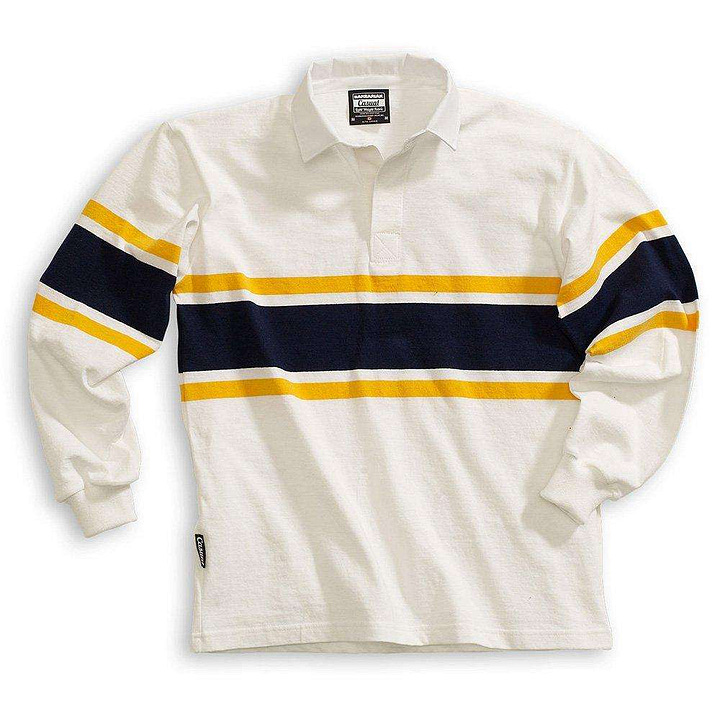

They undeniably carry a collegiate connection, representing team spirit, along with the broader American interpretation of British menswear. However, the Japanese quickly embraced this piece, incorporating it into the Hard Ivy aesthetic.
Pendleton board shirts are quintessentially American. Originally worn by surfers for warmth while resting ashore, they rapidly evolved into a staple for those seeking both comfort and rugged style, characterised by bold plaids and the renowned softness of Pendleton's high-quality wool.
They function almost like a light work shirt, easily layered over an Oxford shirt or a simple white T-shirt.
A great aspect of Rugged Ivy is its expansive focus, which goes beyond the East Coast's traditional Ivy style. For instance, the image of The Beach Boys above, wearing Pendleton shirts, showcases a look that celebrates the entire United States.
This inclusivity introduces various fabrics, such as denim. Deeply rooted in the workwear of the American West, denim serves as a rugged staple that embodies a timeless, coast-to-coast appeal, making it an ideal complement to the Rugged Ivy wardrobe.


The classic western shirt features a hardwearing, rugged fabric that not only lasts and moulds to you over time but also keeps you warm. In the picture below, I’ve subtly layered it beneath my J.Press Yale sweatshirt to add an extra layer of warmth.
Next time in Part Two…
We’ll take a closer look at the pieces that round out Rugged Ivy: accessories, legwear, footwear, and more. From the perfect hiking boot to rugged belts and sturdy wool socks, each element is designed to add depth and purpose to the look, making it truly versatile and rooted in both function and style. Stay tuned—it’s all coming soon, with more insights on layering, texture, and how to craft a wardrobe that’s ready for any season.
Thanks for reading,
Tom



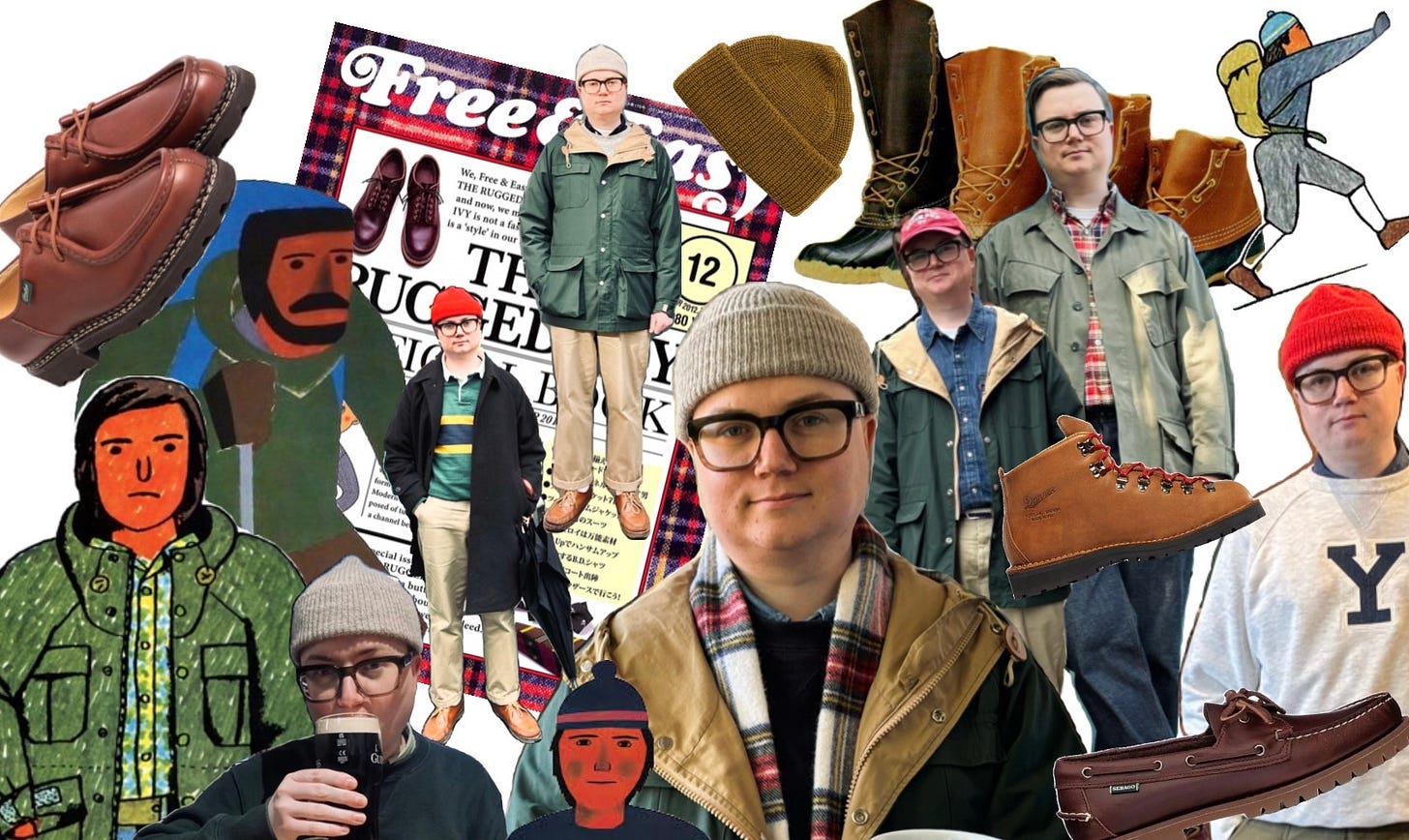

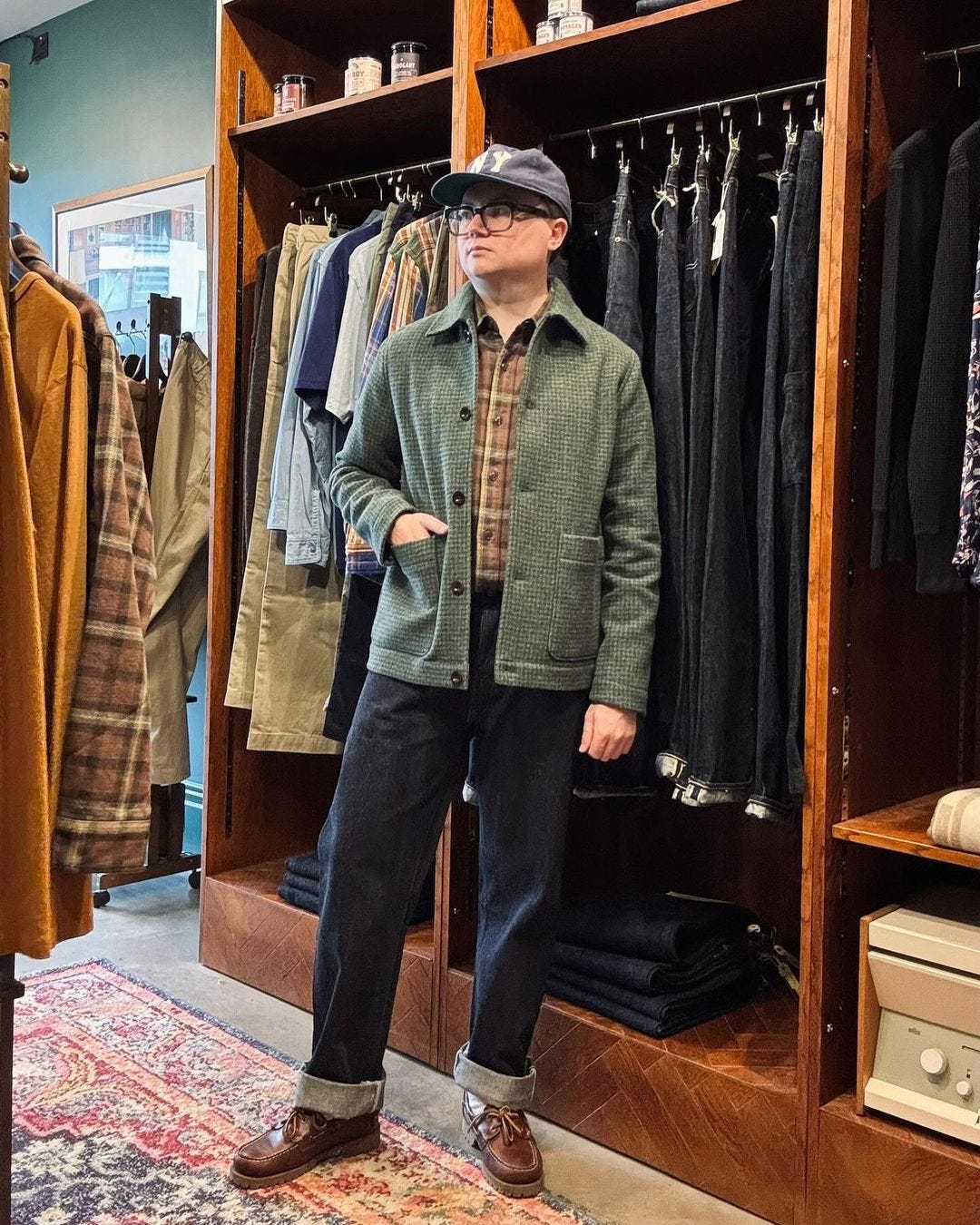
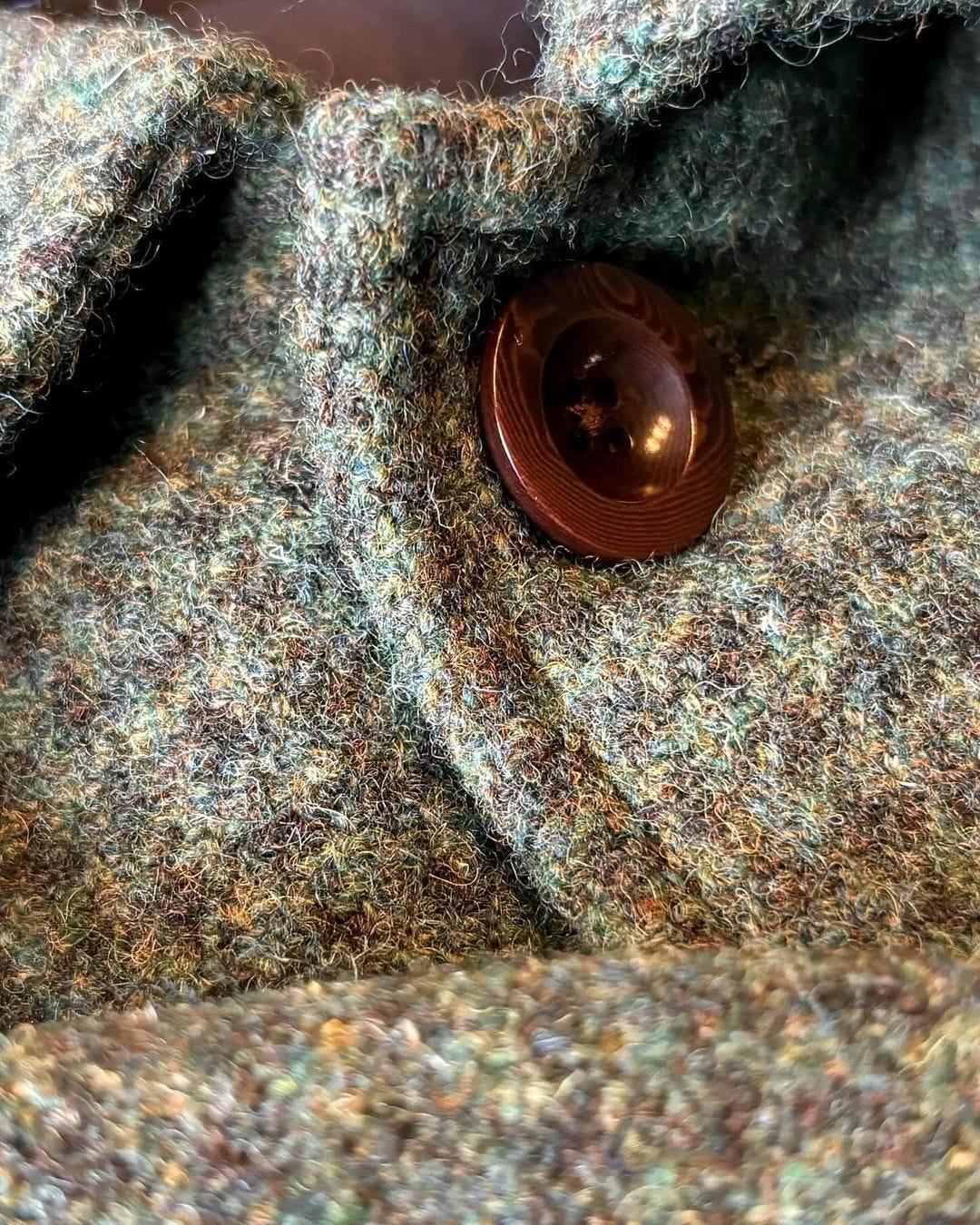

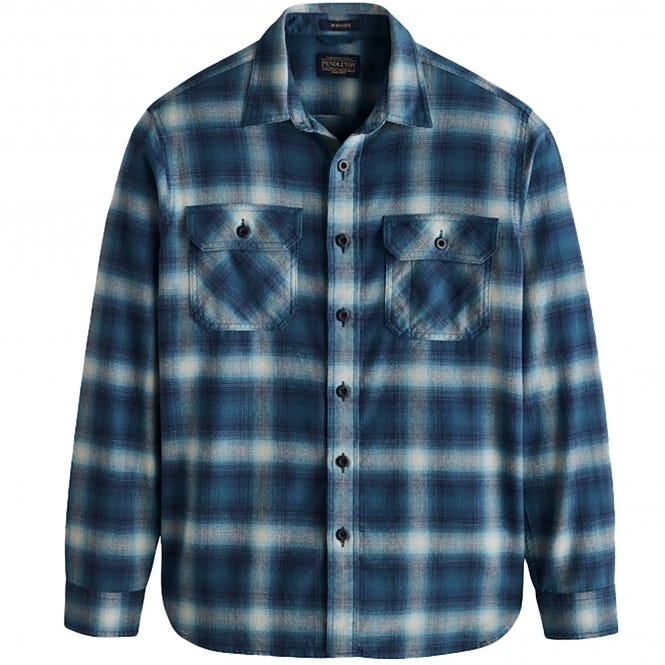
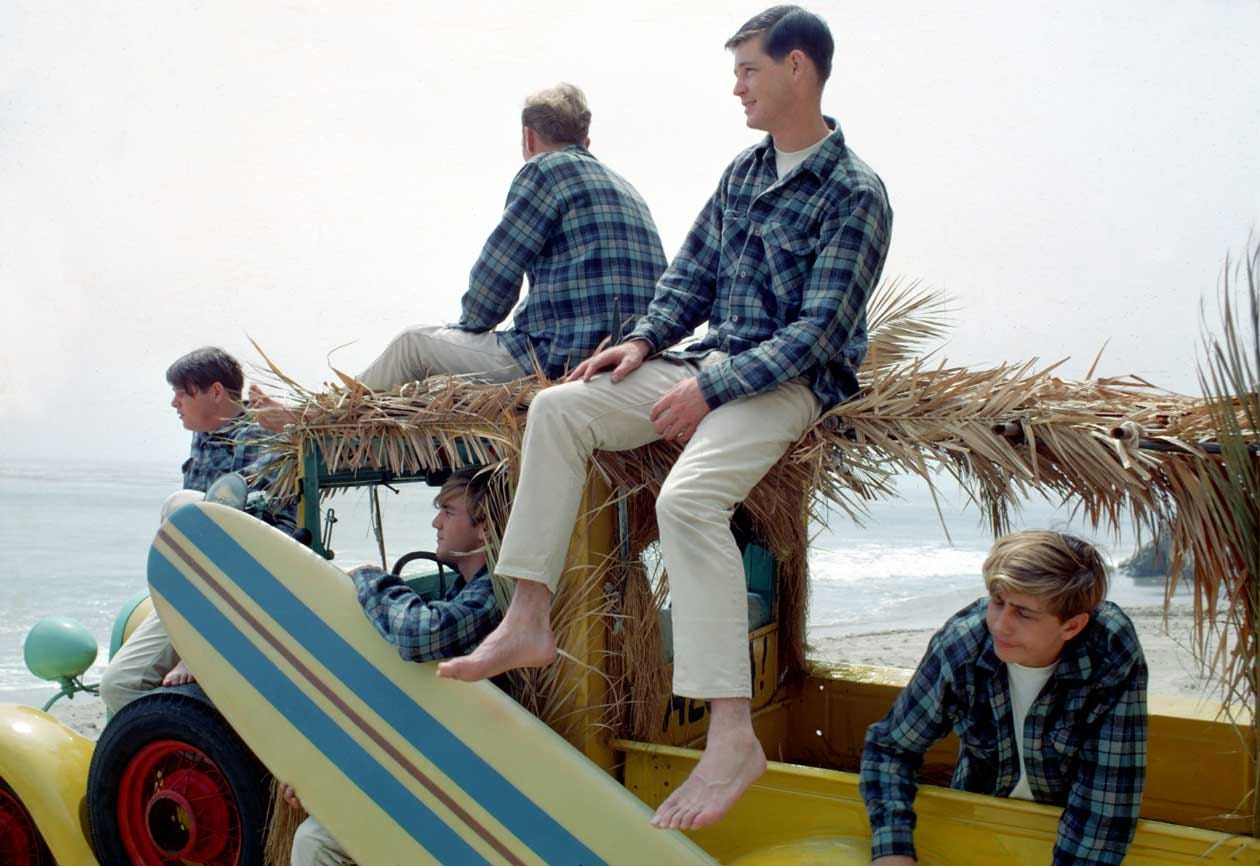
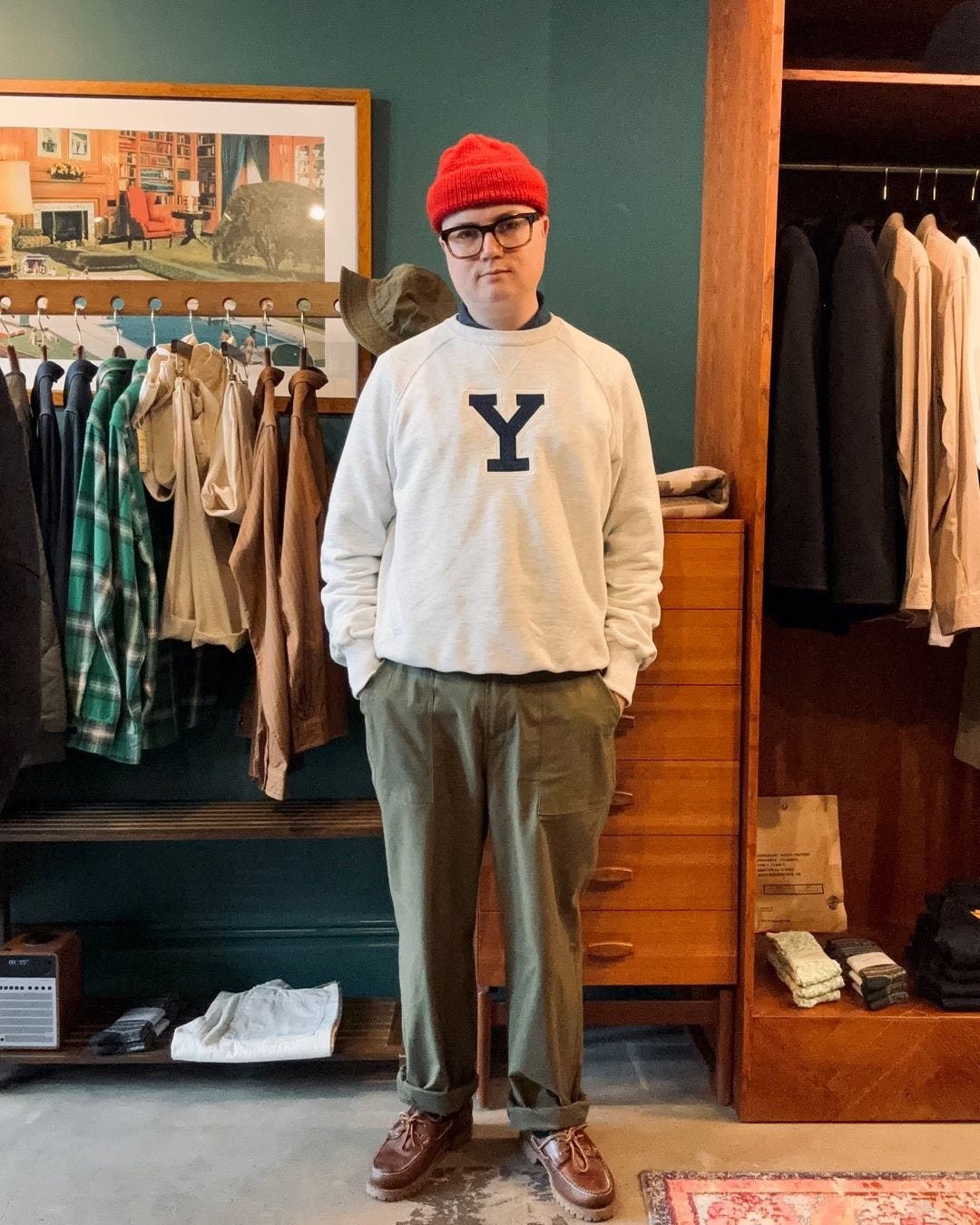
Enjoyed this one Tom.
There’s so much to do dig into with this look, you could do a whole piece just on the footwear, from Duck boots to Campsides.
Look forward to part 2
Lee